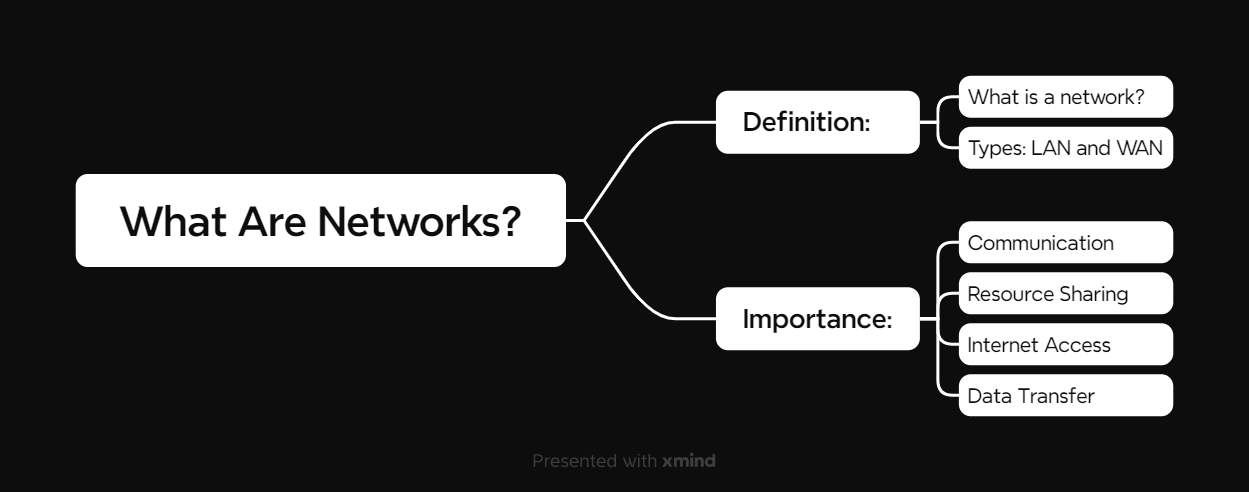What Exactly Is a Network?
At its core, a network is just a bunch of devices connected together so they can share stuff. “Stuff” can be files, internet access, or even just some good ol’ data packets. These devices can be computers, phones, printers, or even your smart fridge.
Think of it like this: A network is a digital hangout spot where all your devices can talk to each other and work together.
There are two main types of networks:
- Local Area Network (LAN): This is like a small party—everything is close by, like in your house, school, or office.
- Wide Area Network (WAN): This is the big leagues—it connects devices across cities, countries, or even continents. The internet is the ultimate WAN.
Why Are Networks Important?
Okay, so why should you care about networks? Well, they’re basically the glue that holds the digital world together. Here’s why they’re a big deal:
1. Communication
Networks let devices talk to each other. Without them, you wouldn’t have email, messaging apps, or video calls. Imagine trying to send a photo to a friend without the internet. Yeah, not happening.
2. Resource Sharing
Networks let you share printers, storage, and even processing power. Instead of buying a printer for every desk, your whole office can use one printer. Smart and efficient.
3. Internet Access
The internet itself is one massive network of networks. Your home router connects you to your ISP (Internet Service Provider), and from there, you’re plugged into the worldwide web. Without networks, say goodbye to streaming, gaming, and doomscrolling.
4. Data Transfer
Networks make moving data around super easy. Whether you’re uploading files to the cloud or downloading memes, it’s all thanks to networks.
How Do Networks Work?
Here’s a simplified view of what’s happening under the hood:
- Devices Connect: All your gadgets—phones, laptops, game consoles—connect to a router or switch.
- Data Gets Packaged: Information is split into tiny chunks called packets. Each packet has a destination address (like a digital envelope).
- Packets Travel: These packets zoom across the network, hopping between devices until they reach their destination.
- Data Reassembles: Once all the packets arrive, they’re put back together so you can see your cat video or load a webpage.
Types of Networks You Should Know
- LAN (Local Area Network): Perfect for small areas like a home or office. Fast and efficient.
- WAN (Wide Area Network): Covers large areas. The internet is the ultimate example.
- PAN (Personal Area Network): Super small, like your phone connecting to your smartwatch.
- MAN (Metropolitan Area Network): Covers a city or a campus.
- VPN (Virtual Private Network): A secure tunnel within a network. Great for privacy.
Networks in Real Life
Let’s bring it home with some everyday examples:
- At Home: Your Wi-Fi connects all your devices to the internet. That’s a LAN.
- At Work: Offices use networks to share files, printers, and apps.
- On the Go: Mobile data connects your phone to the internet through a cellular network.
- In Gaming: Multiplayer games use networks to connect players around the world.




